About Us For business cooperation, please contact QQ: 3350579506
For more exciting consultations, please follow Electrician 365 (diangong365) Electrician Home QQ Group:Group 1: 468193845 Group 2: 522898769
1 Pre-Use Checks and Preparations
1.1Before using the multimeter, please check the casing. Do not use a damaged multimeter; check for cracks or missing plastic parts; pay special attention to the insulation around the connectors. 1.2Check if the insulation of the test leads is damaged or if the metal of the probes is exposed; check if the test leads are conductive; please replace any damaged test leads before using the multimeter. 1.3Use the multimeter to measure a known voltage to ensure the multimeter is operating normally; do not use a multimeter that is malfunctioning.
2 Usage Precautions
2.1 Do not apply a voltage higher than the instrument’s rated value between the terminals or between any terminal and ground.
2.2 Be especially careful with voltages above 30V AC or 60V DC, as these voltages pose a risk of electric shock.
2.3 Select the appropriate terminal, function, and range when measuring.
2.4 Do not use in environments with explosive gases, vapors, or dust.
2.5 When using test probes, keep fingers behind the protective device.
2.6 When making connections, connect the common test lead first, then connect the live test lead; when disconnecting, disconnect the live test lead first, then disconnect the common test lead.
2.7 Before testing resistance, continuity, diodes, or capacitors, disconnect the power supply of the circuit and discharge all high-voltage capacitors.
2.8 For all functions, including manual or automatic range, to avoid the risk of electric shock due to incorrect readings, first use the AC function to verify the presence of AC voltage. Then, select a DC voltage equal to or greater than the AC range.
2.9 After use, turn the multimeter dial to “OFF” to shut it down.
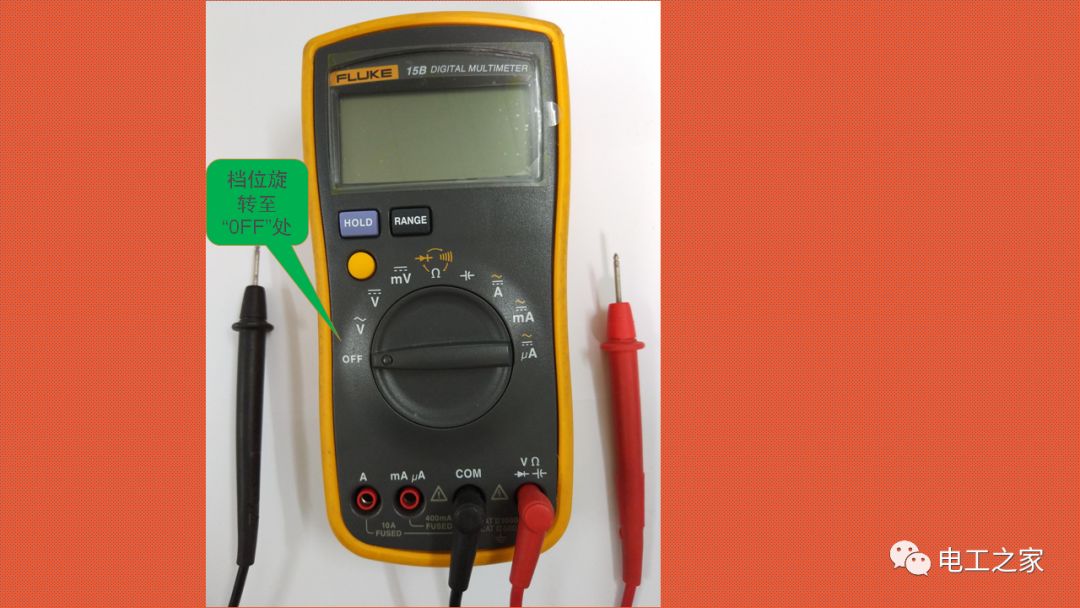
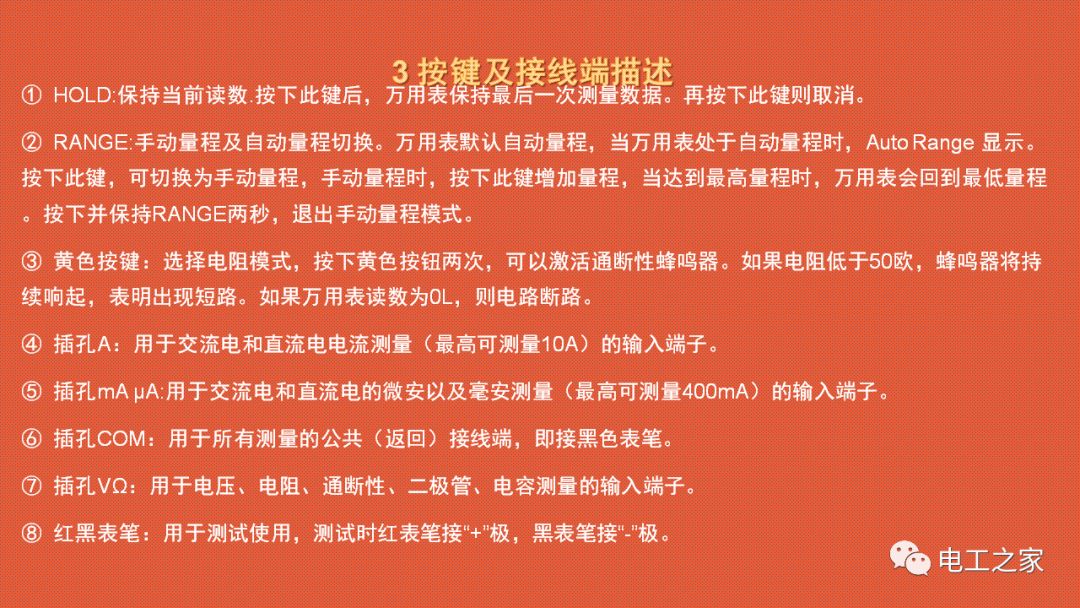
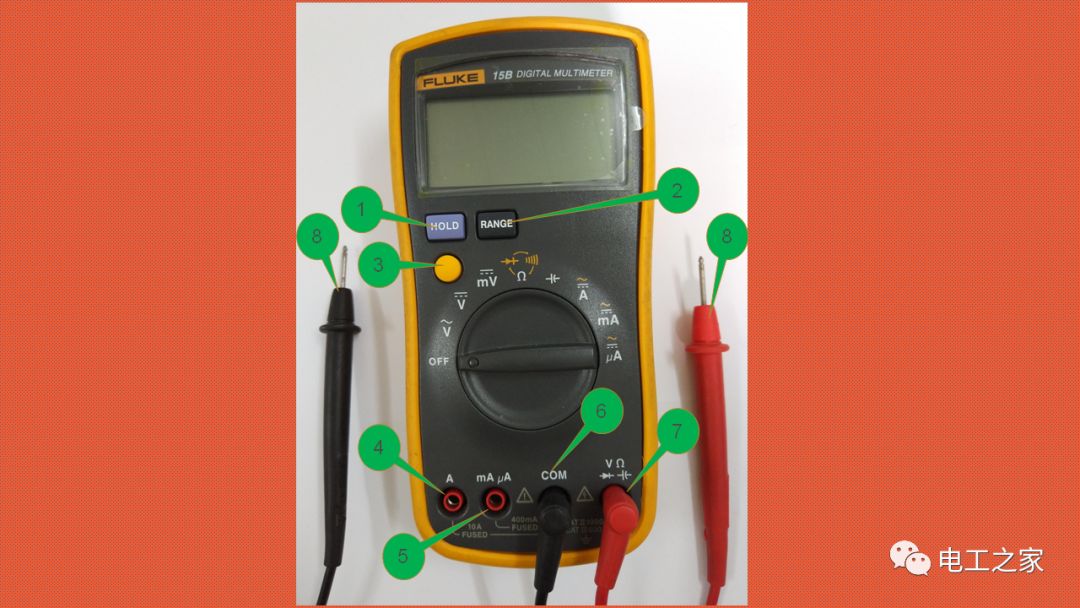

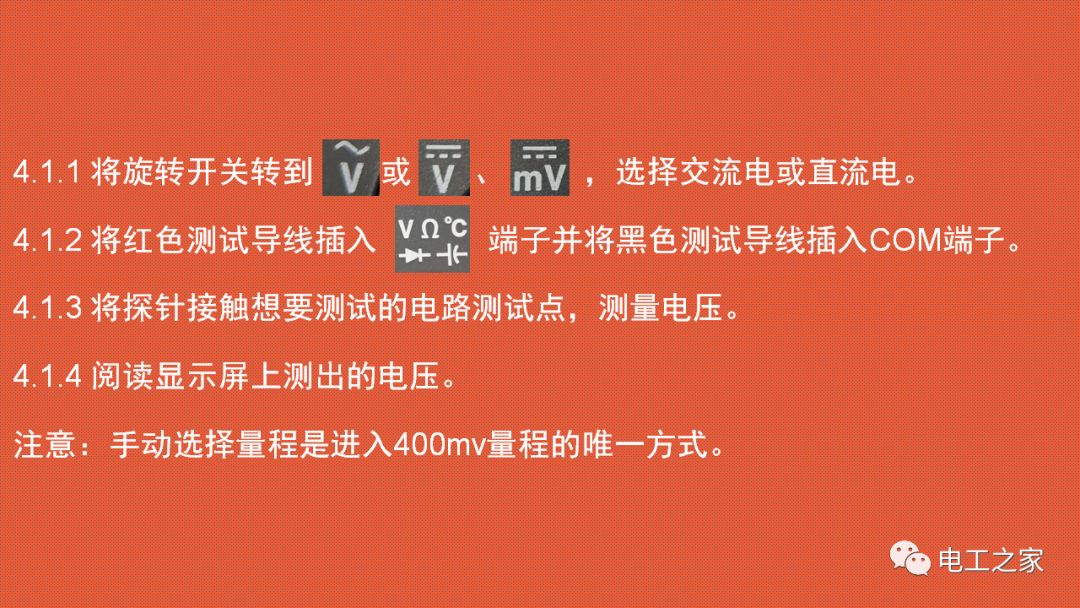
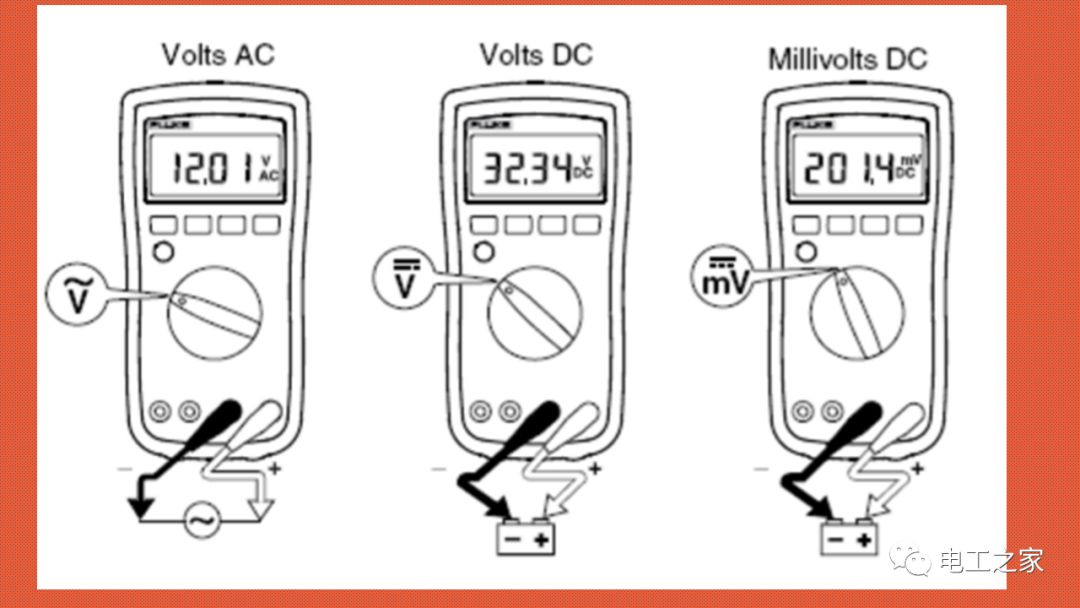
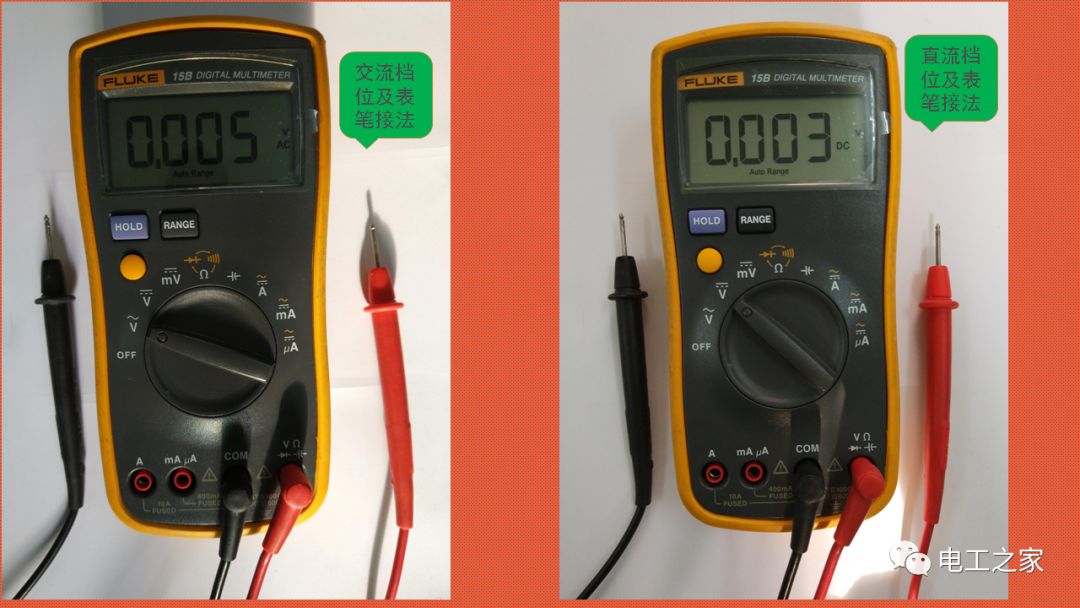
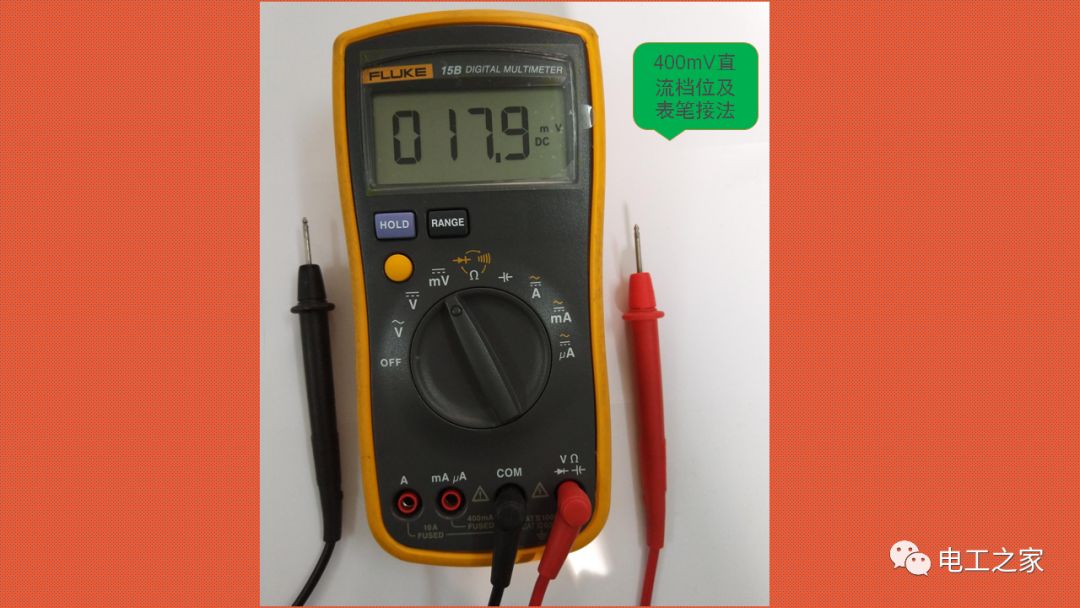
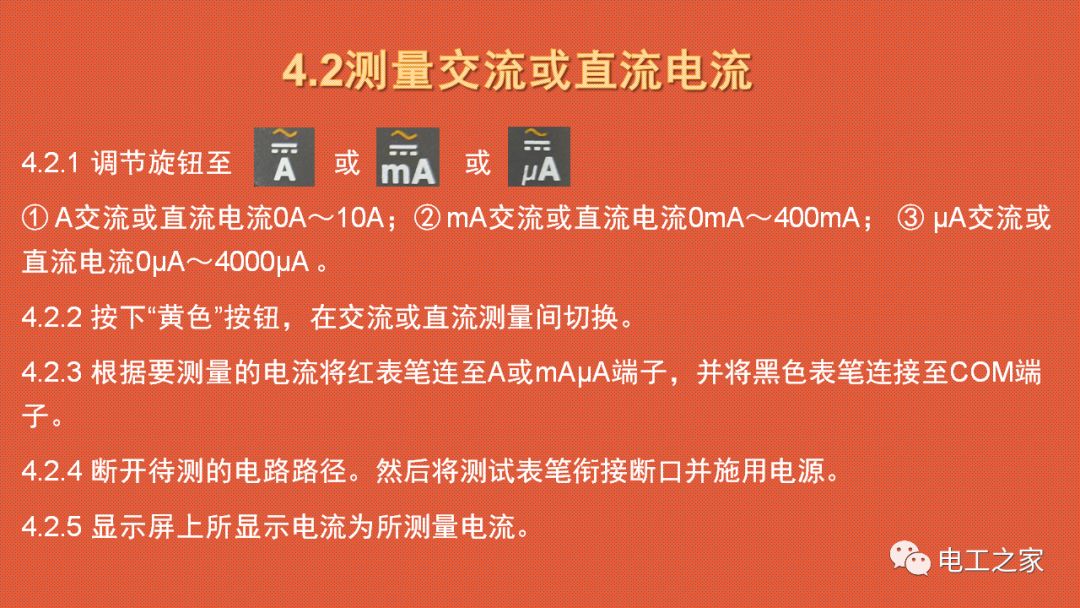
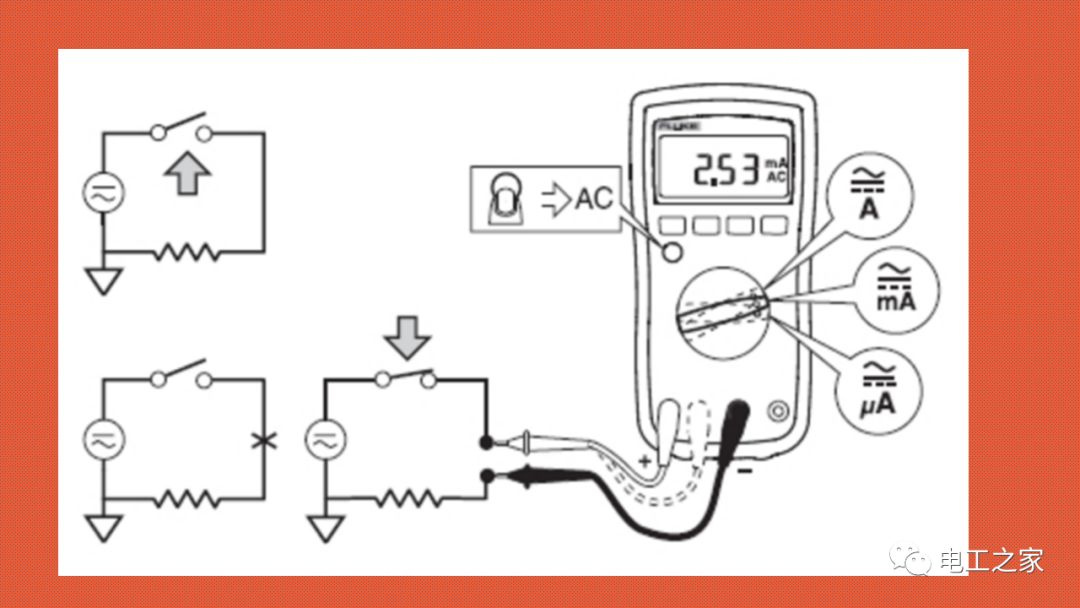
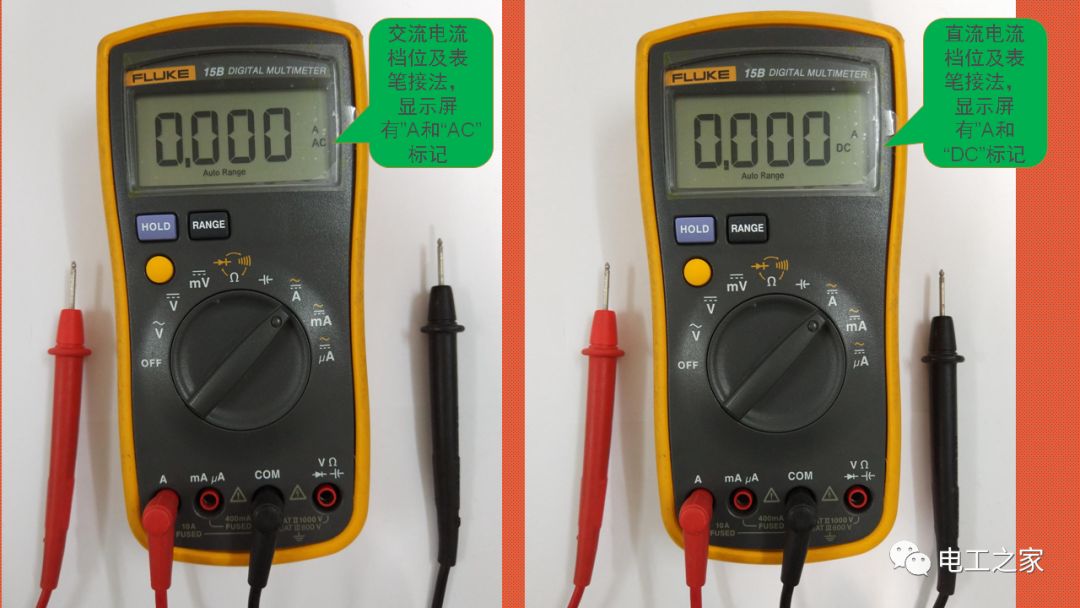
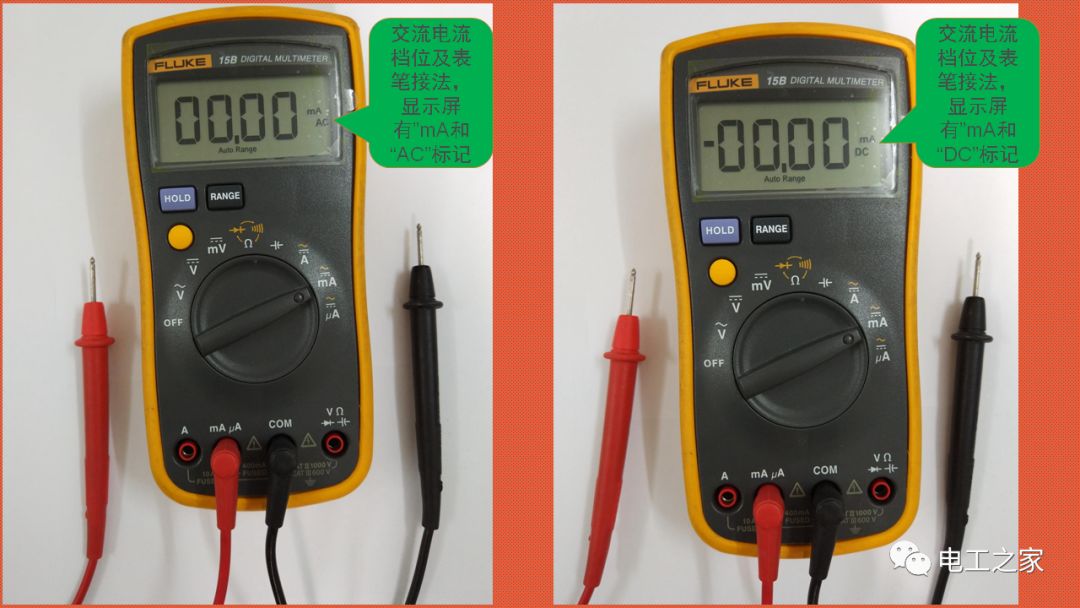
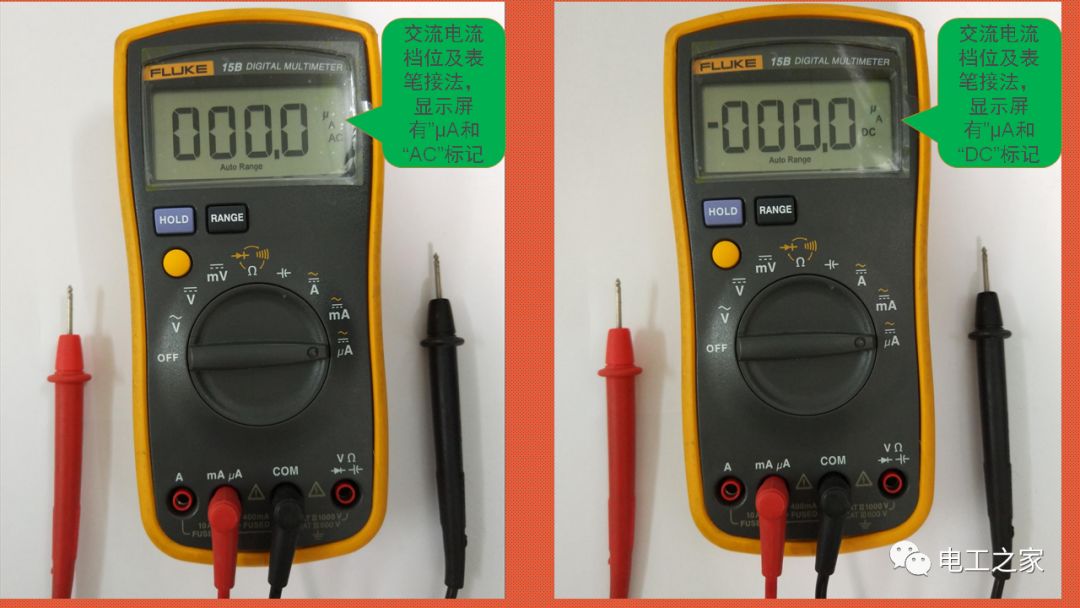
4.3 Measuring Resistance
When measuring resistance, to avoid electric shock or damage to the multimeter, ensure that the power supply of the circuit is turned off and discharge all capacitors.

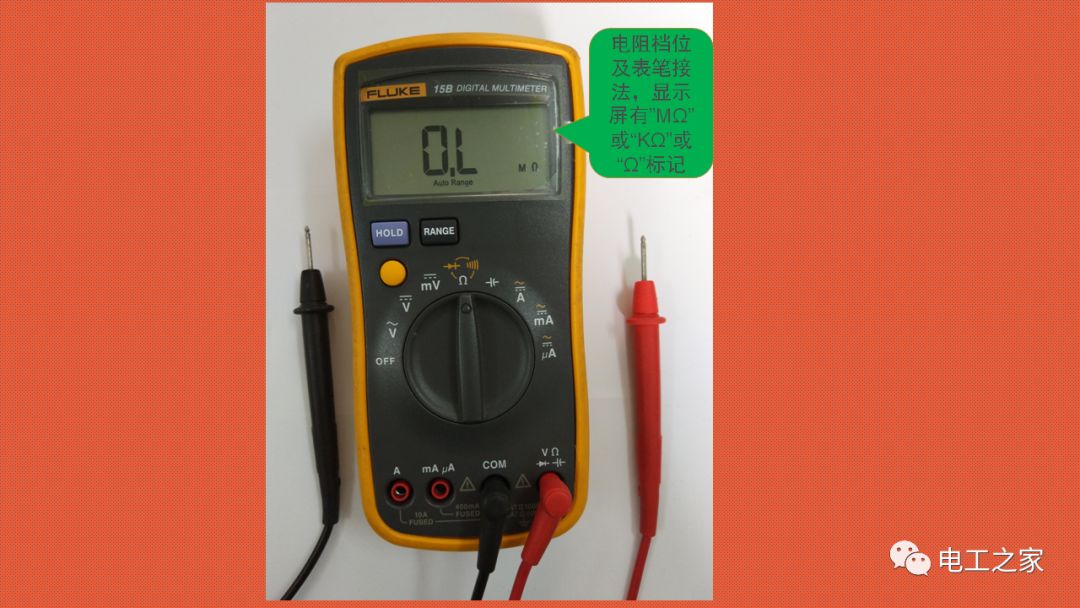
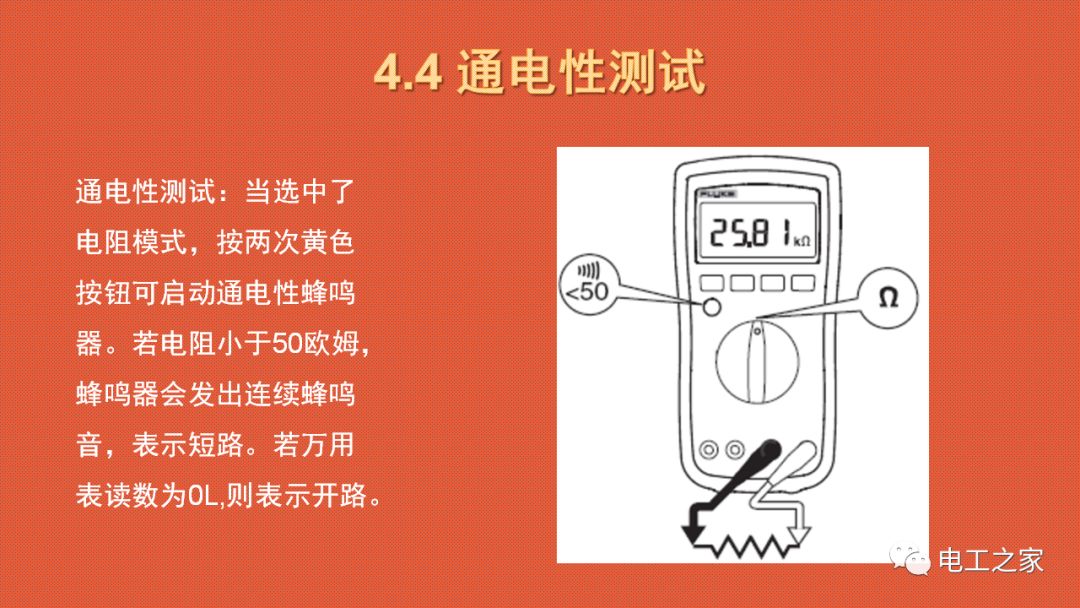
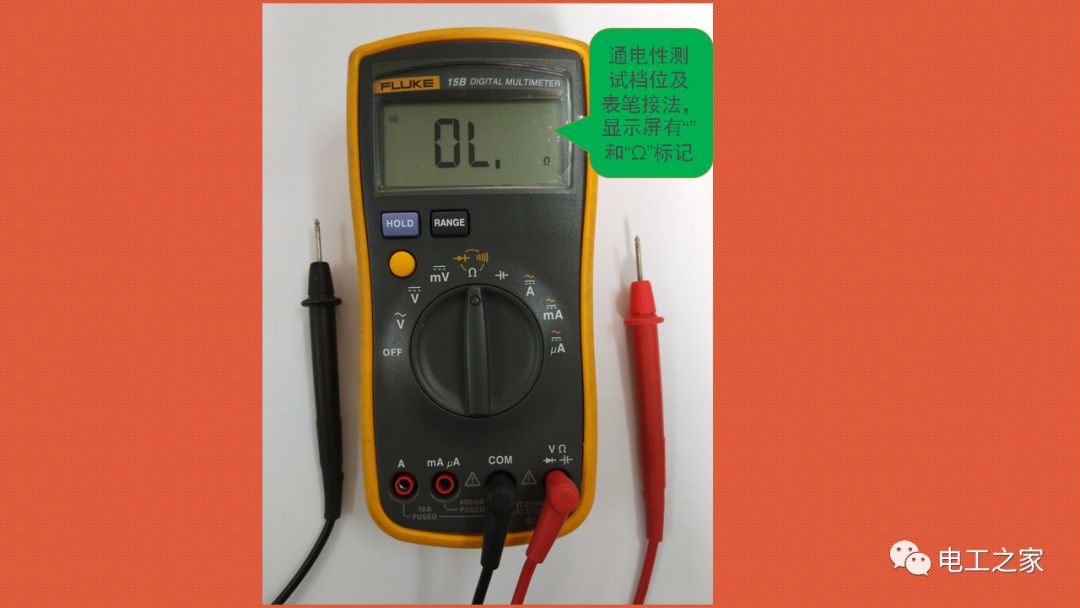
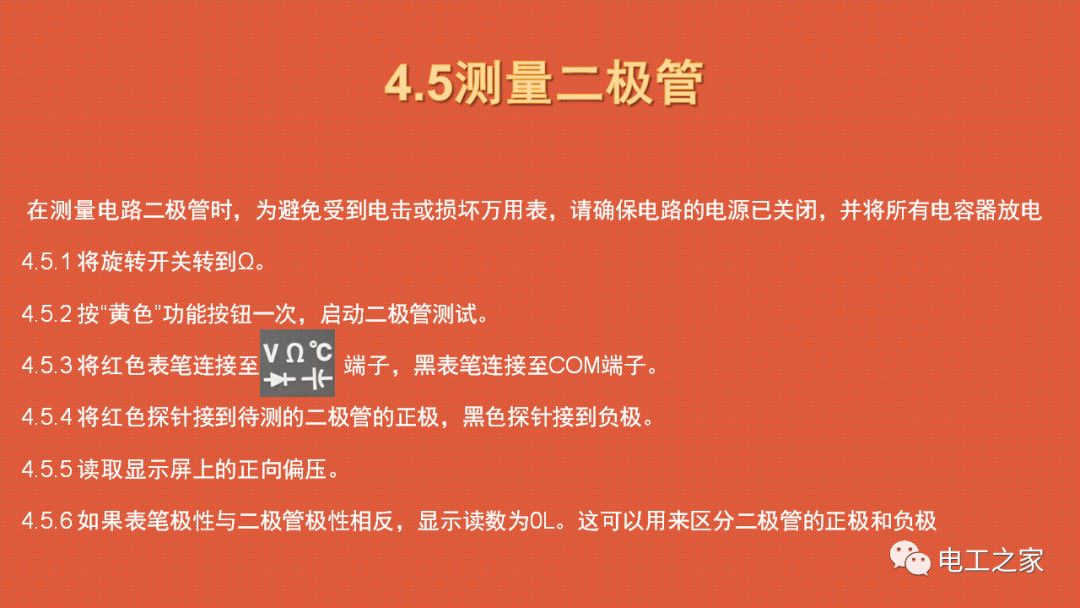
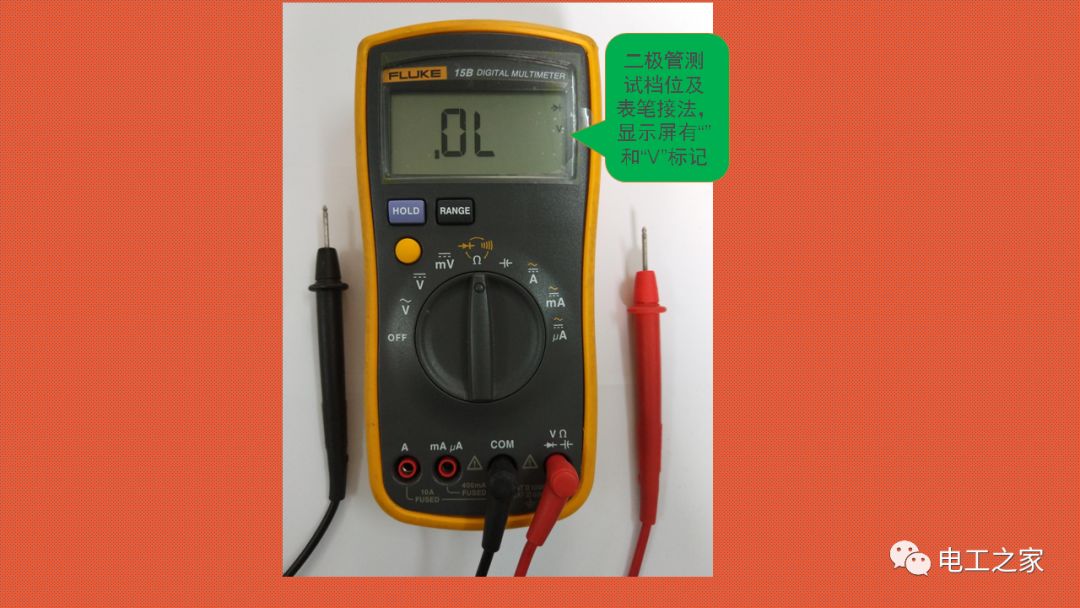
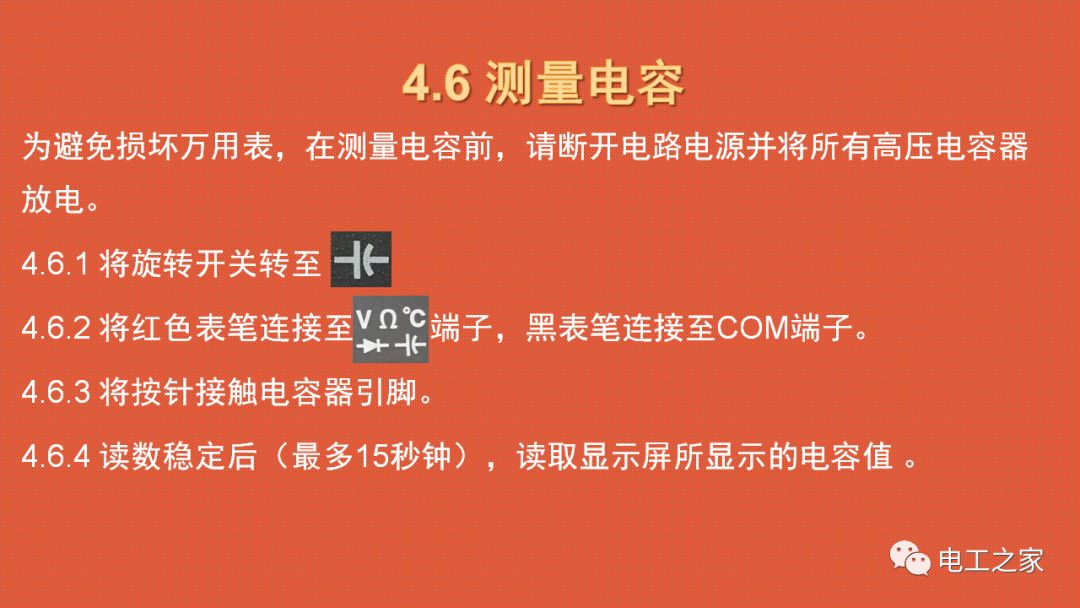
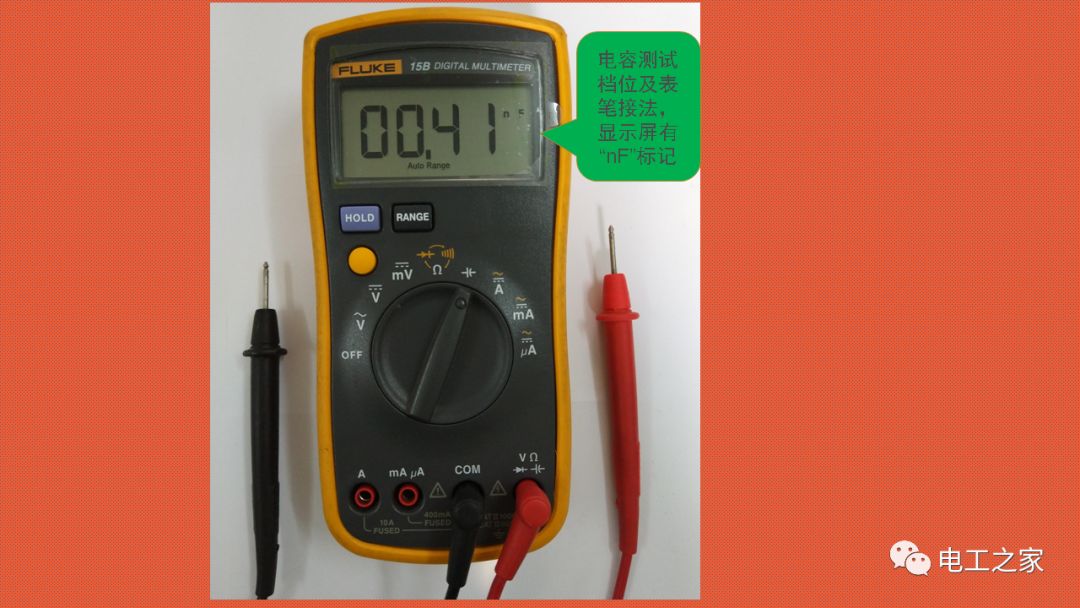
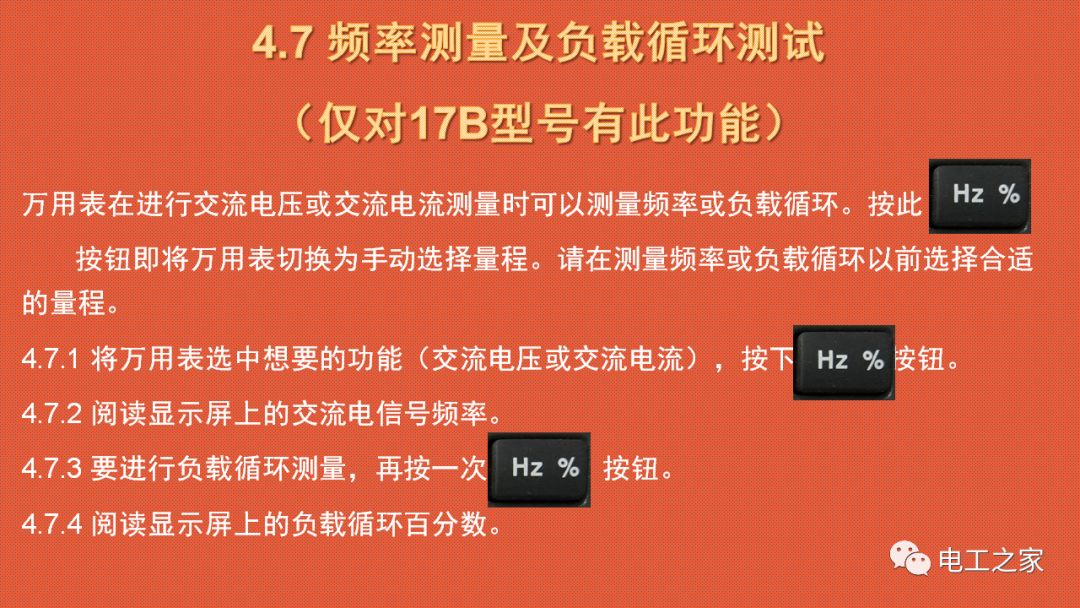
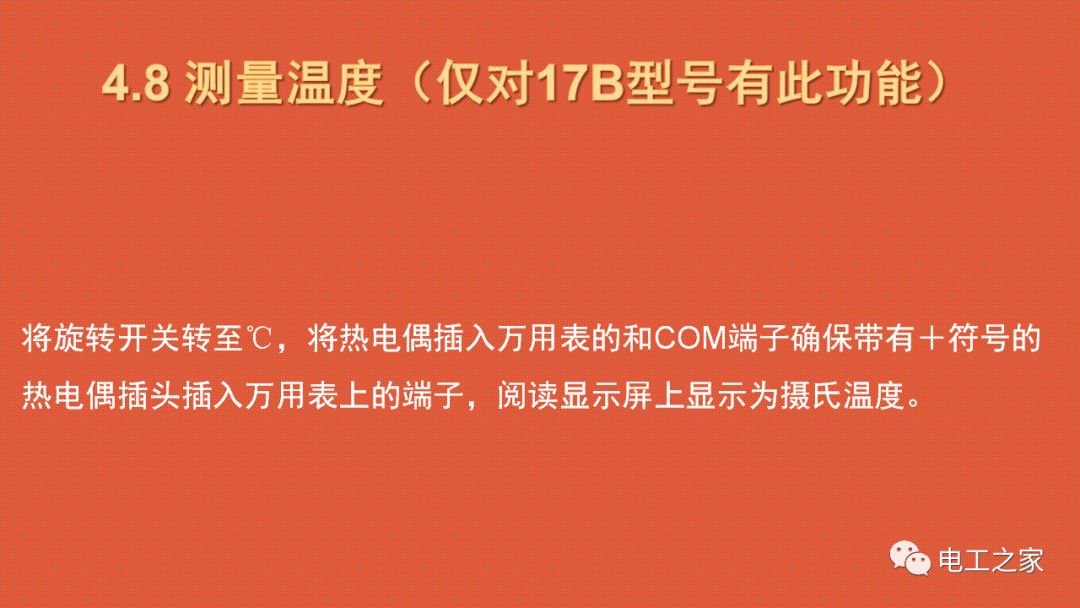
5 General Maintenance and Care
5.1 Except for replacing batteries and fuses, do not attempt to repair or maintain the multimeter unless you are a qualified technician with sufficient calibration, performance testing, and repair instruments.
5.2 Regularly clean the instrument casing with a damp cloth and mild detergent. Do not use corrosives or solvents.
5.3 Dirty or damp terminals may affect readings.
5.4 Cleaning terminals:① Turn off the multimeter and remove all test leads.② Remove dirt from the terminals.
③ Use a clean new cotton swab to wipe the inside of each input terminal.④ Apply a thin layer of high-quality machine oil inside each terminal with a new cotton swab.
5.5 To ensure reading accuracy, replace the battery immediately when the battery indicator appears.
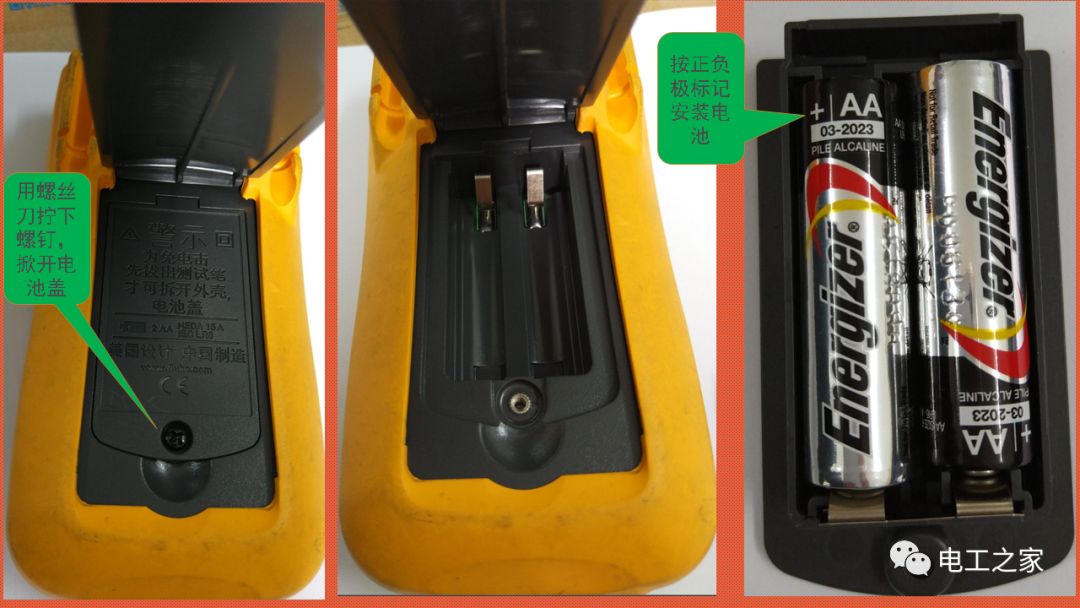
Popular Recommendations
What do you know about the significance of wire colors in electrical equipment?
Calculation method for copper busbars in distribution cabinets: estimating the amount of copper busbars used in GGD switch cabinets
Contactor control circuits? This article is sufficient
How to connect copper and aluminum wires? Ensuring you understand at a glance
The main protective role of equipotential bonding
Understanding our distribution system
Detailed explanation of the ‘capacitor method’ for checking wire breakpoints
How motors are wound (beginner’s guide)
From novice to expert: using a multimeter to measure voltage and distinguish between neutral and live wires
Secondary circuit schematic, layout, and wiring diagram
(National Grid training specific) Circuit breaker control circuit
How is the compensation capacity of reactive power compensation devices calculated? Reactive power compensation capacity calculation coefficient table
Comprehensive understanding of leakage protection: working principles and purchasing methods of leakage protectors [illustrated]
From novice to expert: checking the arrival of a newly purchased multimeter
Strange issues encountered when repairing LED bulbs
About the issue of LED dimming when the lights are off and flickering of energy-saving lamps

Long press the QR code to follow us

